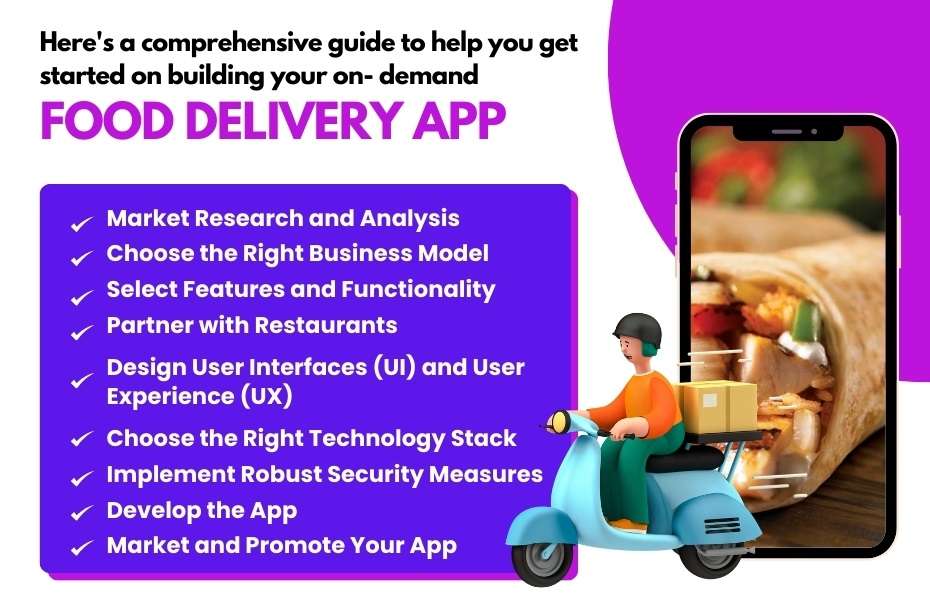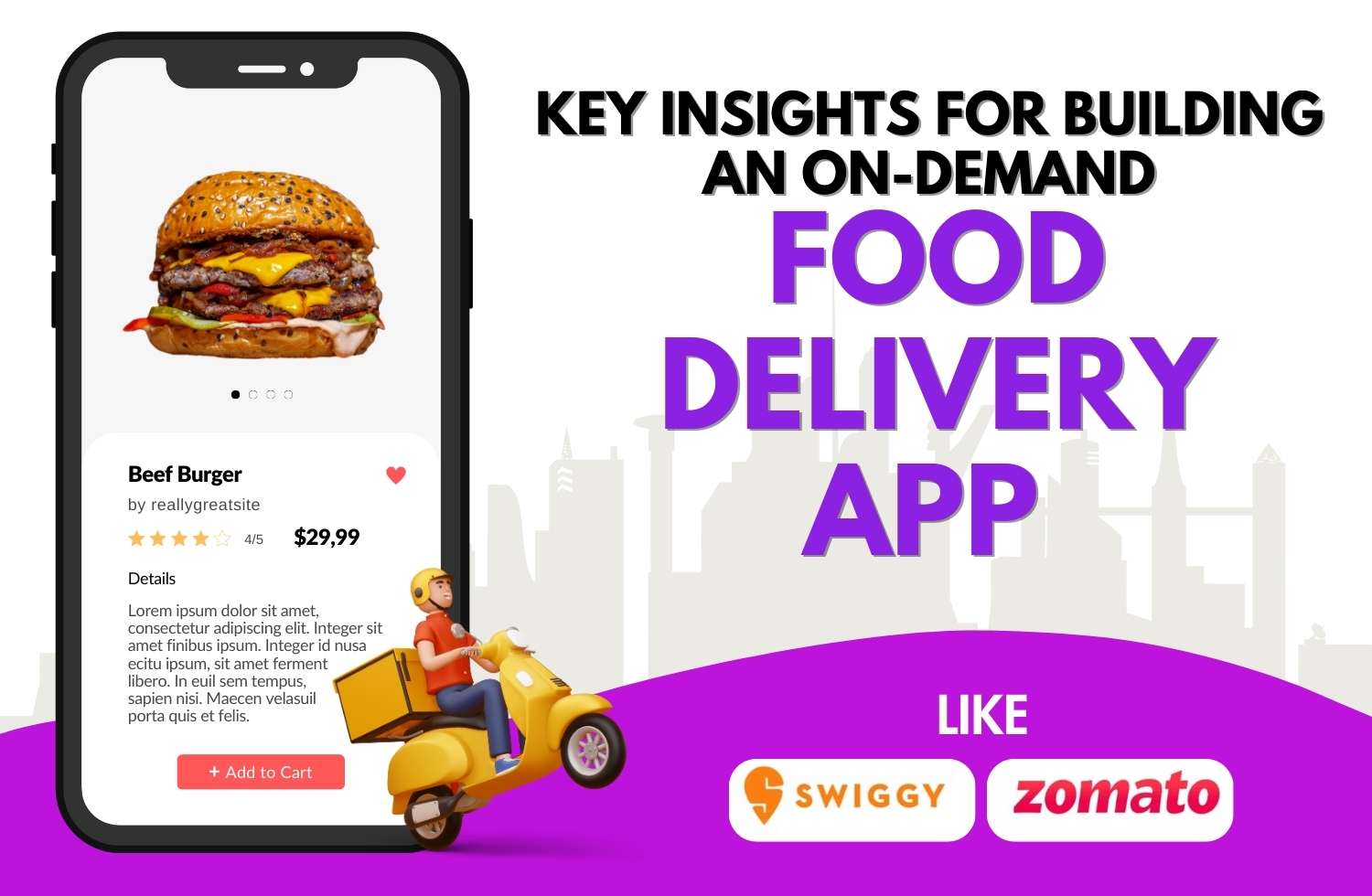Here's How Both these Food Delivery Giants Have Established Themselves As a Leading Player in the Food Delivery Market:
1. Platform Aggregation: Provides a comprehensive platform that aggregates restaurants, cafes, and eateries in various cities. Users can explore a wide range of cuisines, menus, and prices, all within the Zomato and Swiggy app or website.
2. User-Friendly Interface: The user interface is designed to be intuitive and user-friendly. Customers can easily search for restaurants based on location, cuisine, or specific dishes. The interface also allows for seamless ordering and payment processing.
3. Mobile Application: The mobile app offers features like real-time tracking of orders, personalized recommendations, and easy reordering, enhancing the overall user experience.
4. Restaurant Partnerships: Both of the food delivery giants have established partnerships with a vast network of restaurants, ranging from local eateries to popular chains. This ensures that users have access to a wide variety of dining options for delivery.
5. Delivery Fleet: They also provide their delivery fleet to ensure timely and efficient food delivery. This allows them to have greater control over the delivery process, resulting in improved reliability and customer satisfaction.
6. Promotions and Discounts: They regularly offer promotions, discounts, and deals to attract customers and drive sales. These promotions can range from discounted meal bundles to cashback offers, incentivizing users to order through the platform.
7. Diverse Revenue Streams: In addition to delivery fees, Swiggy and Zomato generate revenue through advertising, premium memberships, and other ancillary services. This diversified revenue stream helps Zomato remain financially sustainable and competitive in the market.
Why Building Your Food Delivery App is Beneficial?
Building your on-demand food delivery app, similar to popular platforms like Swiggy and Zomato, offers a plethora of benefits in today’s digital age.
1. As the food delivery market is witnessing exponential growth globally, especially with the increasing reliance on digital platforms for convenience. By developing your app, you tap into a market with immense potential for expansion and profitability.
2. Owning your app enables direct interaction with customers, giving you insights into their preferences, behaviours, and feedback. T
3. A dedicated app serves as a powerful branding tool. It helps establish your brand identity, build credibility, and foster brand loyalty among users.
4. Operating your food delivery platform allows you to retain a larger share of the revenue generated from orders. You have control over pricing strategies, commission fees, and promotional offers, which can significantly generate revenue for your business.
Building your own on-demand food delivery app positions your business for long-term success and growth in the competitive food delivery landscape.

1. Market Research and Analysis
It is crucial to conduct thorough market research and analysis before diving into app development, Understand your target audience, their preferences, and the existing competitors in your target region. Analyze the strengths and weaknesses of existing apps like Swiggy to identify how they benefit from the opportunities.
2. Choose the Right Business Model
There are several business models to consider, including:
1. Aggregator Model: Partner with restaurants and earn a commission on each order.
2. Delivery Model: Employ your fleet of delivery personnel for faster service.
3. Subscription-based model: In this model where users pay a monthly fee for benefits like free delivery.
3. Select Features and Functionality
Key features of an on-demand food delivery app like Swiggy include:
1. User Registration and Profiles
2. Restaurant Listings with Menus and Ratings
3. Real-Time Order Tracking
4. Secure Payment Gateways
5. Ratings and Reviews
6. Push Notifications
7. Admin Dashboard for Managing Orders and Payments
8. Customer Support
4. Partner with Restaurants
A robust network of partner restaurants is crucial for the success of your app. Reach out to local restaurants and chains to onboard them onto your platform. Offer them incentives such as increased visibility, marketing support, and access to valuable customer data.
5. Design User Interfaces (UI) and User Experience (UX)
Create intuitive and visually appealing interfaces for both customers and delivery personnel. Focus on simplicity, ease of navigation, and seamless order placement to enhance the user experience. Design a user-friendly interface that makes it easy for customers to browse restaurants, place orders, track deliveries, and make payments.
6. Choose the Right Technology Stack
Selecting the right technology is important for improving the performance and scalability of your app. Consider factors like platform (iOS, Android, or both), programming languages, frameworks, and third-party integrations.
7. Implement Robust Security Measures
Security is paramount when dealing with sensitive customer data and payment information. Implement robust security measures to protect user privacy and ensure secure transactions. Utilize encryption technologies and secure payment gateways.
8. Develop the App
Whether you’re building the app in-house or outsourcing development, ensure clear communication and regular updates throughout the process. Test the app rigorously to identify and fix any bugs or glitches. Always prefer an experienced mobile app development company for on-demand food delivery app development.
9. Market and Promote Your App
Once your app is ready, focus on marketing and promotion to attract users. Utilize a mix of digital marketing channels such as social media, search engine optimization (SEO), influencer marketing, and app store optimization (ASO) to increase visibility and acquire users. Offer promotions, discounts, and referral programs to incentivize downloads and usage.
Here Are the Main Panels Involved in the On-Demand Food Delivery Apps:
1. Customer Panel:
This panel is designed for users who order food through the app. It includes browsing restaurants and menus, placing orders, tracking orders in real time, reviewing restaurants, and making payments.
2. Restaurant Panel:
a) This panel is for restaurant owners or managers who partner with the app.
b) Features include managing menu items, updating prices and availability, accepting or rejecting orders, viewing order history, and managing restaurant details.
3. Delivery Driver Panel:
a) This panel is for individuals who deliver food orders.
b) Features include accepting or rejecting delivery requests, navigating to the pickup location and then to the customer’s address, updating order status, and viewing earnings.
4. Admin Panel:
a) This panel is for administrators who manage the overall operation of the app.
b) Features include managing user accounts, restaurants, and delivery drivers, resolving disputes, analyzing performance metrics, updating app content, and configuring settings.
5. Analytics Panel:
This panel provides detailed analytics and insights into various aspects of the platform’s performance, such as order trends, customer behaviour, popular
Conclusion- Building an on-demand food delivery app like Swiggy and Zomato demands a comprehensive approach that encompasses thorough market research, defining a unique selling proposition, selecting the right business model, designing intuitive user interfaces, implementing robust technology, and executing a strategic launch and marketing plan that delights customers and drives business growth in the competitive food delivery market and develop a successful food delivery app. By following these steps and other information you can position your app for long-term success in the dynamic world of on-demand food delivery.

